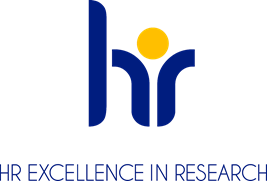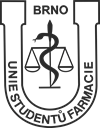STUDENTSKÁ VĚDECKÁ KONFERENCE
MAGISTERŠTÍ STUDENTI
25. 4. 2023
9:00 - 14:15, Pavilon farmacie I
Program biologické sekce
Pavilon farmacie I
-
9:00 - 9:05
Zahájení konference
-
9:05 - 9:15
Prezentace sponzora konference: VIRA CHEMimp
-
10:15 - 10:30
Evaluation of Cytotoxic Action of 4-Hydroxy-7-(trifluoromethyl)quinoline-3-carboxamide Derivatives In Vitro
Lenka Hájková 1
1 Department of Molecular Pharmacy, Faculty of Pharmacy, Masaryk University
e-mail: 484547(@)mail.muni.cz
Key words: cytotoxicity, IC50, THP-1, WST-8, quinoline-3-carboxamides
Derivatives of 4-hydroxy-7-(trifluoromethyl)quinoline-3-carboxamide are new potential antimicrobials for which it is necessary to determine their basal cytotoxicity as it is one of the basic parameters that we need to obtain about potential drugs as a part of preclinical testing. Cytotoxicity was determined on the model cell line THP-1, cultured either in the presence or absence of serum, using WST-8 metabolizing detection. The resulting IC50 values were compared with structurally analogous substances: quinoline-2-carboxamides.
A group of 30 substances which were synthesized at the Department of Chemical Drugs were tested on their cytotoxic action. Of the 30 substances, 21 were shown to be non-toxic to THP-1 cells with their IC50 being higher than 20 μmol/l. If they also show promising activity against resistant strains of bacteria, they can be further investigated as potential antimicrobials. Nine substances from the test group showed certain cytotoxicity (0,31 – 11,94 µmol/l) in serum-free medium, which was further compared with the results from medium with 10% FBS. Eight of these substances appear to be non-toxic in the presence of serum, only one showed cytotoxic effects with IC50 lying between 5 µmol/l and 10 µmol/l. Results were also compared with structural analogs of these substances, quinoline-2-carboxamide derivatives. In general, quinoline-3-carboxamide derivatives appear to be more toxic, probably due to the trifluoromethyl groups contained in their molecules. For those cytotoxic substances, it is suggested to investigate their antiproliferative action.

Supervisor: doc. RNDr. Jan Hošek, Ph.D.
-
10:30 - 10:45
Evaluation of the Inhibitory Potential of C-Geranylated Flavonoids on the Inhibition of Bacterial Biofilm
Adam Tesárek 1
1 Department of Molecular Pharmacy, Faculty of Pharmacy, Masaryk University
Key words: geranylated flavonoids, Staphylococcus epidermidis, bacterial biofilm, Paulownia tomentosa
Antibiotic resistance is considered a major threat to public health to undermine the efficacy of modern medicine. Due to the overuse and misuse of conventional antibiotics, there is an emergence of bacterial pathogens that are resistant to one or more antibiotics. This consequently leads to infections becoming more difficult to treat resulting in increased morbidity and mortality.
To address this issue, there is a global need for the development of new substances with antimicrobial activity. As one of the options, the plant secondary metabolites are considered.
In this work, 10 geranylated flavonoids isolated from Paulownia tomentosa Steud. (Paulowniaceae) were examined for their antibacterial and anti-biofilm activity on Staphylococcus epidermidis. The experiment consisted of testing the minimum inhibition concentration (MIC) of these substances by using the microdilution method and crystal violet staining was used as a method for testing the anti-biofilm activity.
As a result of this experiment, 7 of these 10 substances showed positive antimicrobial activity, with diplacone and 3’-O-methyl-5’-hydroxydiplacone being considered most active with their MIC 8 μg/ml. Also, 6 of the tested compounds showed also anti-biofilm activity in certain concentrations, with diplacone being the most active, reducing formation of biofilm by 60% at concentration 4 μg/ml.
Supervisor: PharmDr. Jakub Treml, Ph.D.
-
10:45 - 11:00
Development of Novel Drug Carriers and Their Effects in Liver In Vitro 3D Model
Robin Durník 1, Marina Felipe Grosso 2, Subhasis Chattopadhyay 3, Mahya Asgharian Marzabad 3
1 Department of Biochemistry, Faculty of Science, Masaryk University
2 RECETOX, Faculty of Science, Masaryk University
3 CEITEC - Central European Institute of Technology, Masaryk University
4 Department of Natural Drugs, Faculty of Pharmacy, Masaryk Universitye-mail: rdurnik(@)mail.muni.cz
Key words: drug carrier, enterohepatic circulation, drug targeting, spheroid, 3D liver model
A large amount of promising drug candidates fails during clinical trials because of their low solubility, stability, biological availability, targeting, and deleterious side effects in human organism that go along. The aim of this work is to develop and study novel drug carriers, which could suppress the abovementioned drawbacks.
The prototypes of carriers (currently undergoing patent proceedings) have shown an affinity towards the enterohepatic circulation. The drug, encapsulated and transported by the drug carrier, could therefore be specifically targeted into liver in which it would be released.
Previously developed potential drug carriers and their building blocks were studied using liver 3D in vitro model - HepG2 spheroids. Here, we assessed toxicity as well as structure-toxicity relationship of the carriers and their building blocks. Out of a family of compounds, those with appended methyl group in their structure showed significantly higher toxicity. This is likely due to methanol release during their enzymatic degradation. These observations helped us in further structural optimizations of the building blocks finally leading to non-toxic components at the studied concentrations. In addition, fluorescence analogues of these building blocks were prepared. The transport and distribution could be followed using fluorescent microscopy (Fig. 1). It was observed that this component accumulates in the spheroids in localized structures that could correspond to bile canaliculi.

Acknowledgement: This study is supported by project MUNI/C/0123/2023 and project MUNI/16/0116/2023
Supervisors: doc. RNDr. Pavel Babica, Ph.D.; Ing. Ondřej Jurček, Ph.D., PhD -
11:00 - 11:15
Testing of New Antagonists of Beta-Adrenergic Receptor in Ex Vivo Study
Kamila Olšinová 1, Ahmet Davut Aksu 1, Jana Hložková 1,2,3, Peter Scheer 1,2, Petr Mokrý 1,2, Milan Sepši 3,4
1 Department of Pharmacology and Toxicology, Faculty of Pharmacy, Masaryk University
2 Department of Chemistry, Faculty of Pharmacy, Masaryk University
3 International Clinical Research Centre, St. Anne´s University Hospital, Brno
4 Faculty of Medicine, Masaryk University
5 Department of Internal Cardiology Medicine, University Hospital Brno,e-mail: olsinova.k@seznam.cz
Keywords: malignant ventricular tachyarrhythmias, heart rate, rat, isolated heart model, ischemia-reperfusion injury.
Background and Aims: The aim of this study is to evaluate the potential of newly synthesized beta-adrenergic receptor antagonists to suppress malignant ventricular tachycardia after ischemia-reperfusion injury and their effect on heart rate in an ex vivo model of the isolated perfused heart.
Methods: Three newly synthesized substances BN41, LK50K1 and BN35 were tested at a concentration of 12.5 mg in 5 ml of PEG as a solvent. In an isolated heart, where after 15 minutes of stabilization, a high ligation of the left coronary artery is performed with an ischemic period of 40 minutes. During the last 5 minutes of ischemia, adrenaline is infused continuously from the restoration of perfusion, its dose is doubled, and the infusion is continued for another 5 minutes. In this setting, there is 100% induction of malignant tachyarrhythmias. The arrhythmias are of the character of ventricular fibrillation or rapid polymorphic ventricular tachycardia. Metoprolol and esmolol were used as control groups.
Results: Compared with the untreated group, all the investigated agents were able to significantly suppress the induction of malignant ventricular tachyarrhythmias (MKT). In the metoprolol group, the incidence of MKT was zero, and the duration of MKT was 1.25±3.3 s for BN41 and 33.3±33.9 s for esmolol. BN35 (106±145 s) and LK50K1 (58.3±108.7 s) were inferior to esmolol, and this difference was significant.
Conclusion: We can conclude that the substances BN41 and LK50K1 have the potential to suppress the development of MVT but also to reduce heart rate compared to the untreated group.
Acknowledgement: This study was supported by the University specific research grant MUNI/A/1262/2021 and in cooperation with the team of prof. Groszek from the University of Technology in Rzeszow, Poland. The investigation was carried out using the equipment of the Animal Centre of the ICRC-FNUSA.
Supervisor: MVDr. Jana Hložková, PhD.
-
11:15 - 11:30
Testing of New Antagonists of Beta-Adrenergic Receptor In Vivo Study (Phase II)
Karla Buráňová 1
1 Department of Pharmacology and Toxicology, Faculty of Pharmacy, Masaryk University
e-mail: karla.buranova(@)gmail.com
Key words: animal model, beta blockers, heart rate, rat, hypotensive effect
Background and Aims: The aim of the thesis is to evaluate the influence of newly synthesized potential beta-adrenergic receptor blockers on heart rate and blood pressure in an in vivo rat model. The synthesis and testing of new molecules is an integral part of the developing health system, the ambition is to continue the research of the most promising enantiomers of the tested substances.
Methods: For our experiment, we used male Wistar albino laboratory rats and everything was done in full accordance with the project documentation. The rats were put under general anesthesia using the inhaled anesthetic isoflurane 2.5%. Next, we administered xylazine (5 mg/kg) along with ketamine (35 mg/kg) until we reached the tolerance stage of anesthesia. We carefully prepared and performed cannulation of the left carotid artery and inserted heparinized i.v. branula for blood pressure monitoring. We used a model of pharmacologically induced hypertension by continuous infusion of terlipressin. Our parameters were measured 10s before the application and give us an arithmetic mean, which has become our baseline. We tested BN35, BN41, LK50K1 in concentrations of 1.25 mg for 5 minutes. The effect of the substances was compared with the control groups that served as the standard of evaluation.
Results: The substance BN35 reduced systolic, mean and diastolic pressure. LK50K1 had a neutral effect on pulse pressure. BN41 had a neutral effect on heart rate and diastolic pressure but increased systolic, mean and pulse pressure.
Conclusions: After processing and evaluating the individual results, the substance BN41 had the most optimal combination of an antiarrhythmic effect with a minimal effect on arterial blood pressure among the studied substances.
Acknowledgement: This study was supported by the University specific research grant in cooperation with the team of doc. Groszek from the University of Technology in Rzeszow, Poland.
Supervisor: MVDr. Jana Hložková, Ph.D., MVDr. Peter Scheer
-
11:30 - 11:45
Biodistribution of Systematically Applied Hyaluronan in Rheumatoid Arthritis
Anna Chadimová, Daniela Rubanová 2,3, Matěj Šimek 5, Kristina Nešporová 5
1 Department of Pharmacology and Toxicology, Faculty of Pharmacy, Masaryk University, Brno
2 Institute of Biophysics of the Czech Academy of Sciences, Brno
3 Department of Experimental Biology, Faculty of Science, Masaryk University, Brno
4 International Clinical Research Center, St. Anne's University Hospital, Brno
5 Contipro a.s., Dolní Dobrouče-mail: 507477(@)muni.cz
Rheumatoid arthritis (RA) is a chronic inflammatory autoimmune disease primarily affecting the joints. It can lead to cartilage and bone damage. Current therapy involves DMARDs (conventional, biological, nonbiological), NSAIDs and glucocorticoids, which are used to reduce joint inflammation and relieve pain. Various strategies have been introduced to improve ways how to face RA. Hyaluronan (HA), a naturally occurring molecule, plays a vital role in many fields of advanced biomedical applications. It is a large glycosaminoglycan that is the main component of the extracellular matrix. One of the possible fields of use is also RA therapy, in which HA is administered as a therapeutic agent directly to the damaged joint – intraarticulary. The effect of intraarticular administration is based on the physicochemical properties of HA. Some studies have shown that systemic application could be another effective way of administration. However, the mechanism of action has still not been well explained for systemic application. It is why we aimed to study the distribution of systematically applied HA and its mechanism of action in inflamed joints. We used adjuvant-induced arthritis (AIA) mouse model to test our hypothesis that HA accumulates in an arthritic joint. Mice were administered i.v. with fluorescently labelled HA and IVIS XR Lumina in vivo imaging was used to evaluate its pharmacokinetics in a time course. HA conjugated with biotin was used for histological analysis of distribution within paws. The accumulation of HA in the AIA paw reached its peak after 4 h and was stable till the end of experiments at 12 h post injection. Histological analysis confirmed the increased accumulation of HA in the AIA paw, which seemed to accumulate in soft tissue of the paw. Our data indicate that the i.v. application of HA could be an interesting therapeutic strategy in the treatment of RA as HA accumulates in the arthritic joints.
Animal experiments were approved by the institutional Animal Care and Use Committee (protocol n.52/2020 from 15th June 2020).
Supervisor: doc. Mgr. Lukáš Kubala, Ph.D.; MUDr. Marta Chalupová, Ph.D.
-
11:45 - 12:00
Přestávka
-
13:15 - 14:00
Zasedání odborných hodnoticích komisí
-
14:00 - 14:15
Vyhlášení výsledků
-
od 14:15
Raut






